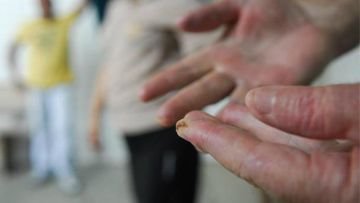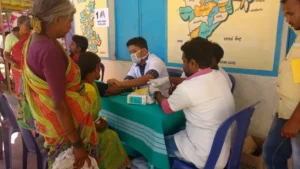Health Education of Leprosy
Health Education of Leprosy plays a crucial role in spreading awareness, reducing stigma, and promoting early diagnosis and treatment of the disease
Leprosy is a chronic infectious disease caused by the bacteria Mycobacterium lepro. It primarily affects the skin, nerves, and mucous membranes. Although leprosy has been around for centuries, misconceptions and lack of awareness have contributed to stigma and discrimination against affected individuals.
Health education plays a crucial role in preventing, diagnosing, and treating leprosy while reducing stigma in society. This article explores the importance of health education in leprosy, its transmission, symptoms, treatment, prevention, and the role of awareness campaigns.
Table of Contents
Understanding Leprosy
1. What is Leprosy?
Leprosy, also known as Hansen’s disease, is a bacterial infection that can cause severe nerve damage, leading to disabilities if left untreated. However, with early diagnosis and proper treatment, leprosy can be cured without long-term complications.
Leprosy mainly affects the skin and peripheral nerves, leading to characteristic skin lesions and neurological impairments. It is a slow-progressing disease, which means symptoms may take years to appear after infection. The bacteria affect cooler parts of the body, such as the hands, feet, and face, leading to deformities if left untreated.
2. Causes and Transmission
- Caused by Mycobacterium leprae.
- Spread through prolonged close contact with untreated cases.
- Transmission occurs through respiratory droplets (coughing or sneezing).
- It does not spread through casual contact like shaking hands or sharing food.
- Genetic susceptibility plays a role in disease progression.
Leprosy is not highly contagious and requires extended exposure to an untreated patient to spread. The bacteria primarily infect individuals with weakened immune systems or those with genetic susceptibility.
3. Symptoms of Leprosy
Leprosy symptoms vary depending on the type and severity of the disease. Common symptoms include:
- Skin patches that are lighter or darker than normal skin.
- Loss of sensation in affected areas.
- Nerve damage leading to weakness or numbness.
- Ulcers on feet due to loss of pain sensation.
- Thickened nerves and muscle paralysis in severe cases.
- Eye problems, including blindness in advanced cases.
- Loss of eyebrows and eyelashes.
- Deformities in fingers, toes, and facial structures.
4. Types of Leprosy
- Paucibacillary (PB) Leprosy – Mild form with a few skin patches.
- Multibacillary (MB) Leprosy – More severe with multiple lesions and nerve involvement.
- Tuberculoid Leprosy – A milder form with well-defined skin lesions.
- Lepromatous Leprosy – A severe form with widespread skin bumps and nodules.
- Borderline Leprosy – An intermediate form between tuberculoid and lepromatous types.
Health Education of Leprosy
Health education of leprosy is essential in raising awareness, promoting early diagnosis, and ensuring effective treatment. Many people still have misconceptions about leprosy, leading to stigma and discrimination against affected individuals. By educating communities about the causes, symptoms, and treatment options, we can help reduce fear and encourage timely medical intervention. Awareness campaigns, school programs, and community workshops play a crucial role in spreading correct information and supporting those affected. With proper knowledge and medical care, leprosy can be completely cured, allowing patients to lead healthy and fulfilling lives.
Importance of Health Education in Leprosy
Health education is essential for:
- Spreading accurate information about leprosy.
- Encouraging early diagnosis and treatment.
- Reducing stigma and discrimination.
- Promoting personal hygiene and preventive measures.
- Training healthcare workers to handle leprosy cases effectively.
- Teaching communities about the importance of social inclusion for affected individuals.
- Dispelling myths and misconceptions about leprosy.
- Ensuring accessibility to healthcare facilities for timely diagnosis and treatment.
Prevention and Control
1. Early Detection and Diagnosis
- People with skin patches should seek medical help immediately.
- Simple tests like skin smears and biopsies help diagnose leprosy.
- Community-based screening programs can help detect cases early.
- Genetic studies are being conducted to understand susceptibility.
- Health education initiatives should encourage self-examination.
2. Treatment with Multi-Drug Therapy (MDT)
- MDT is provided free of cost by the WHO.
- Treatment duration:
- 6 months for PB leprosy.
- 12 months for MB leprosy.
- Regular follow-ups ensure complete recovery.
- Adherence to treatment is crucial to prevent drug resistance.
- Counseling services should be offered alongside medical treatment.
3. Personal and Community Hygiene
- Encouraging regular bathing and washing hands.
- Avoiding prolonged close contact with untreated cases.
- Promoting early medical intervention for suspected cases.
- Educating families of affected individuals on home care.
- Improving sanitation in communities to reduce bacterial exposure.
4. Vaccination and Research
- BCG vaccine provides some protection against leprosy.
- Ongoing research aims to develop more effective vaccines.
- Studies focus on genetic factors influencing susceptibility.
- Research aims to develop rapid diagnostic tools.
- Scientists are exploring new antibiotic treatments for resistant cases.
Reducing Stigma Through Awareness
1. Public Awareness Campaigns
- Using mass media (TV, radio, newspapers, social media) to spread information.
- Organizing community meetings and educational programs.
- Celebrating World Leprosy Day to raise awareness.
- Encouraging testimonials from cured patients to reduce fear.
- Distributing informational brochures in rural areas.
2. School Health Programs
- Teaching students about leprosy to dispel myths.
- Encouraging compassion and support for affected individuals.
- Integrating leprosy education into health curricula.
- Conducting workshops on early signs and symptoms.
3. Role of Healthcare Workers
- Providing counseling to patients and families.
- Educating communities on treatment and prevention.
- Training doctors and nurses on early diagnosis methods.
- Encouraging health workers to advocate for patients’ rights.
- Ensuring equitable healthcare access for marginalized populations.

FAQs About Leprosy
1. Is leprosy contagious?
Leprosy spreads through prolonged close contact with untreated patients but is not highly contagious.
2. Can leprosy be cured?
Yes, with multi-drug therapy (MDT), leprosy is completely curable.
3. Is leprosy a genetic disease?
No, leprosy is an infectious disease, not a genetic condition.
4. Why does leprosy cause disabilities?
If left untreated, nerve damage can lead to muscle weakness, loss of sensation, and deformities.
5. How can we reduce leprosy-related stigma?
By educating people, supporting affected individuals, and promoting early diagnosis and treatment.
6. Can leprosy affect children?
Yes, but it is rare. Children in endemic areas should be monitored for symptoms.
7. Are there any new treatments for leprosy?
Researchers are working on newer antibiotics and potential vaccines to improve treatment outcomes.
Conclusion
Health education is a powerful tool in the fight against leprosy. By spreading awareness, encouraging early treatment, and reducing stigma, we can eliminate leprosy as a public health concern. Governments, healthcare professionals, and communities must work together to ensure that everyone has access to proper medical care and support.
Public participation in awareness campaigns, policy changes to support affected individuals, and continued research efforts will help in achieving a leprosy-free world. By combining medical advancements with education and social acceptance, we can eradicate leprosy’s impact on society and give patients the dignity they deserve.
“Learn about Health Education of Leprosy, its causes, symptoms, treatment, and prevention. Discover how awareness and early diagnosis can help eliminate stigma and improve public health.”













